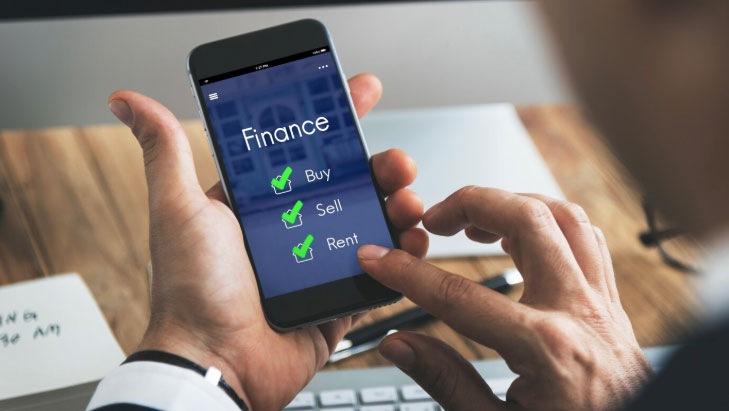As awareness of environmental, social, and governance (ESG) issues grows, more investors are seeking ways to make their money work for them without compromising their values. Sustainable investing is no longer just a niche strategy; it’s a growing movement that allows individuals to align their investment portfolios with their personal beliefs, supporting companies and initiatives that prioritize environmental protection, social responsibility, and ethical governance.
Whether you’re motivated by climate change, human rights, or corporate transparency, sustainable investing offers a way to influence positive change while potentially earning strong returns. Let’s take a closer look at how sustainable investing works and how you can align your portfolio with your values.
What is Sustainable Investing?
Sustainable investing is the practice of choosing investments based on criteria that reflect your personal values, alongside traditional financial factors. It involves evaluating the environmental, social, and governance (ESG) performance of companies, with the goal of supporting those that contribute positively to society and the planet.
This type of investing can take several forms, from excluding companies that harm the environment or violate human rights to seeking out firms that actively promote sustainability, diversity, and ethical governance. ESG factors are typically assessed through third-party ratings and data, making it easier for investors to identify businesses that align with their values.
The Different Approaches to Sustainable Investing
- Exclusionary Screening
One of the simplest ways to practice sustainable investing is through exclusionary screening. This approach involves avoiding investments in companies that engage in activities deemed harmful to society or the environment. For example, you may choose to exclude companies that are involved in fossil fuels, tobacco, or arms manufacturing.
Many sustainable investment funds use exclusionary screening as part of their strategy, allowing investors to opt out of industries or practices they find ethically or morally problematic. These funds are typically referred to as “negative screening” funds and are a good fit for those who want to avoid exposure to certain sectors entirely.
- Positive Screening
Unlike exclusionary screening, positive screening seeks out companies or industries that are actively contributing to positive change. For example, investors might choose to invest in companies with strong sustainability initiatives, such as those that are pioneering renewable energy technologies or promoting social equality.
In positive screening, the goal is not to avoid certain companies but to actively support those that are making a meaningful impact on the world. Investors who follow this approach often look for companies with a proven track record in sustainability or those that are working toward measurable ESG goals.
- Impact Investing
Impact investing goes a step further by focusing on investments that generate both financial returns and measurable social or environmental impact. These investments may support projects or companies that aim to solve global challenges such as climate change, poverty, or healthcare access.
Impact investors typically focus on specific areas such as clean energy, affordable housing, or education. This strategy is ideal for those who want their investments to directly contribute to creating a better world while achieving financial success.
- Thematic Investing
Thematic investing involves targeting specific themes or industries that align with your values. For instance, you might focus on the renewable energy sector, healthcare innovation, or companies that promote diversity and inclusion. Thematic investing allows you to channel your investments toward particular causes or trends that are meaningful to you.
This approach can be highly rewarding if you have a strong interest or passion for a particular field and want to support the companies driving change within that sector.
How to Start Sustainable Investing
- Assess Your Values and Goals
Before you begin building a sustainable portfolio, it’s important to reflect on your values and what you want to support. Are you passionate about the environment and climate change? Do you want to prioritize social justice, equality, or human rights? Understanding your priorities will help you determine the types of companies or causes you want to invest in and avoid.
You’ll also want to consider your financial goals. Sustainable investing doesn’t necessarily mean sacrificing returns, but it’s essential to balance your values with your financial objectives. Some sustainable investment strategies may offer higher returns, while others may prioritize social or environmental impact over short-term profits.
- Research ESG Ratings
ESG ratings and reports are essential tools for evaluating the sustainability of companies. Several agencies, such as MSCI, Sustainalytics, and Morningstar, provide ESG ratings that assess a company’s environmental, social, and governance practices. These ratings can help you identify businesses that align with your values and avoid those with poor sustainability records.
When researching ESG ratings, it’s important to consider the methodology and criteria used by each agency. For example, some rating agencies may place more emphasis on environmental factors, while others may prioritize social or governance issues. Be sure to use a variety of resources to get a well-rounded view of each company.
- Consider Sustainable Investment Funds
If you’re not interested in selecting individual stocks, sustainable investment funds can be a great option. These funds pool money from multiple investors and invest in a diversified portfolio of companies that meet specific ESG criteria. Sustainable funds can be focused on a variety of themes, such as clean energy, gender equality, or corporate transparency.
Exchange-traded funds (ETFs) and mutual funds are popular choices for sustainable investing. These funds offer diversification and allow you to invest in a range of companies that align with your values, all in one portfolio. Many sustainable funds are now available with low fees, making them an accessible option for investors of all sizes.
- Monitor Your Investments
Sustainable investing is an ongoing process. Once you’ve built your portfolio, it’s important to monitor your investments regularly to ensure they continue to meet your values and financial goals. Over time, companies may change their ESG practices, and new sustainable investment opportunities may emerge.
Many investment platforms and robo-advisors now offer tools that allow you to track the ESG performance of your investments and make adjustments as necessary.
The Benefits of Sustainable Investing
Beyond the ethical considerations, sustainable investing offers several advantages. Companies that prioritize ESG factors are often better positioned for long-term success. Sustainability-focused businesses tend to be more innovative, reduce risks, and adapt to changing regulations and consumer preferences. As a result, many investors believe that sustainable investing not only supports a better world but also offers solid financial returns.
Furthermore, sustainable investing enables you to make a positive impact while growing your wealth. By aligning your investments with your values, you can feel confident that your financial decisions are helping to create a more sustainable and equitable future.
Conclusion
Sustainable investing allows individuals to align their portfolios with their values, whether it’s reducing environmental harm, promoting social responsibility, or supporting ethical governance. With a wide range of investment strategies—from exclusionary screening to impact investing—there are numerous ways to build a portfolio that reflects what matters most to you. By carefully researching companies and ESG ratings, considering sustainable funds, and monitoring your investments, you can create a portfolio that not only generates financial returns but also contributes to a better world.














